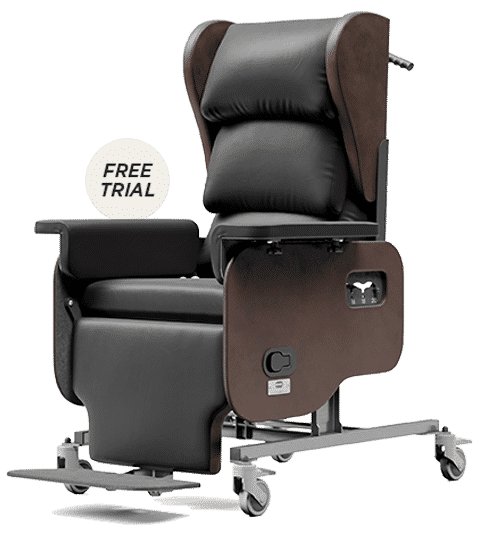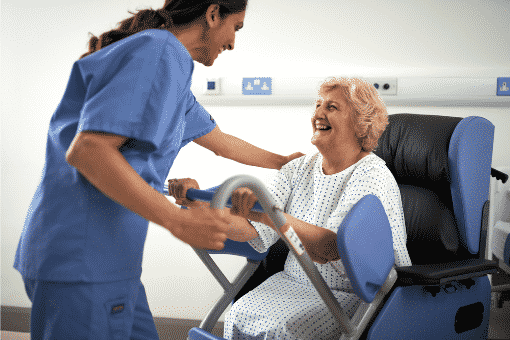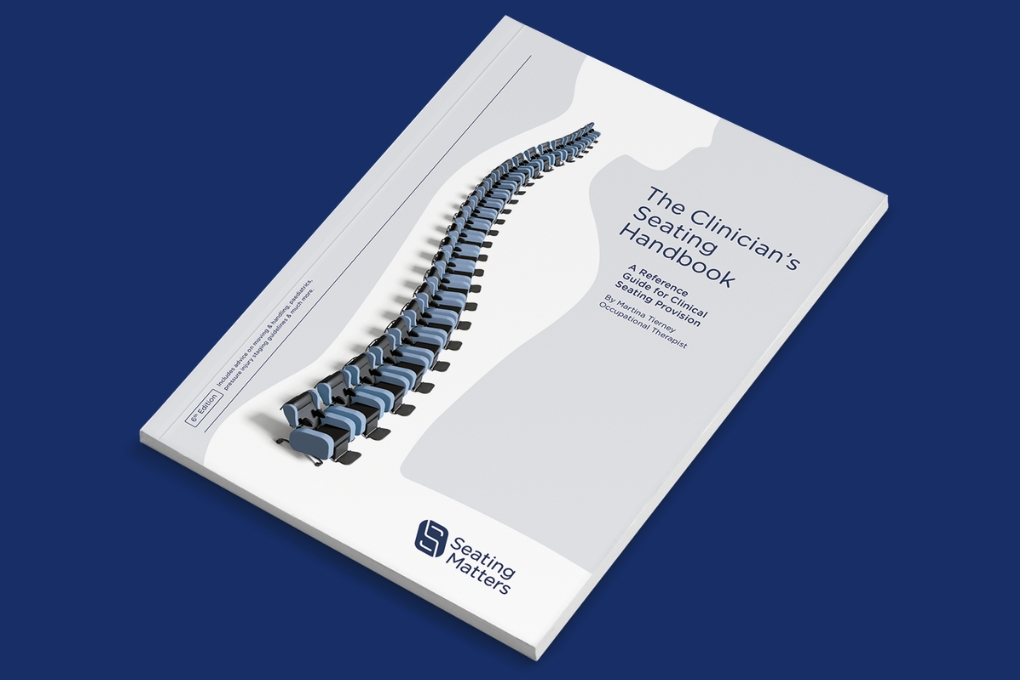What type of aged care chair for my elderly relative?
By Martina Tierney
When I would go in to nursing homes when I started as an OT I would often see elderly residents slumped over in their chair with poor posture, propped up by pillows and leaning to one side or the other. I would find myself thinking, if that was my mother, would I be happy to see her sitting like that?
Typically the elderly portion of the population spend a lot of their day sitting as their mobility declines with age, so comfort is absolutely key. You might notice that your elderly relative may begin to complain of aches and pains whilst sat on their sofa or in their armchair, or perhaps they begin to slouch in their chair or worse still, slide down or fall out of their chair. It is then that you may decide to look at the option of buying or renting a suitable seating solution to meet their needs. You might find an overload of information when researching chairs for elderly so this article is an aid to help you make your decision and differentiate between the various seating options you are likely to come across.
It can be difficult to know what medical and functional needs you need to accommodate or think about when looking at seating, but it is important to be informed and to make the right decision, as it can be costly to get it wrong.
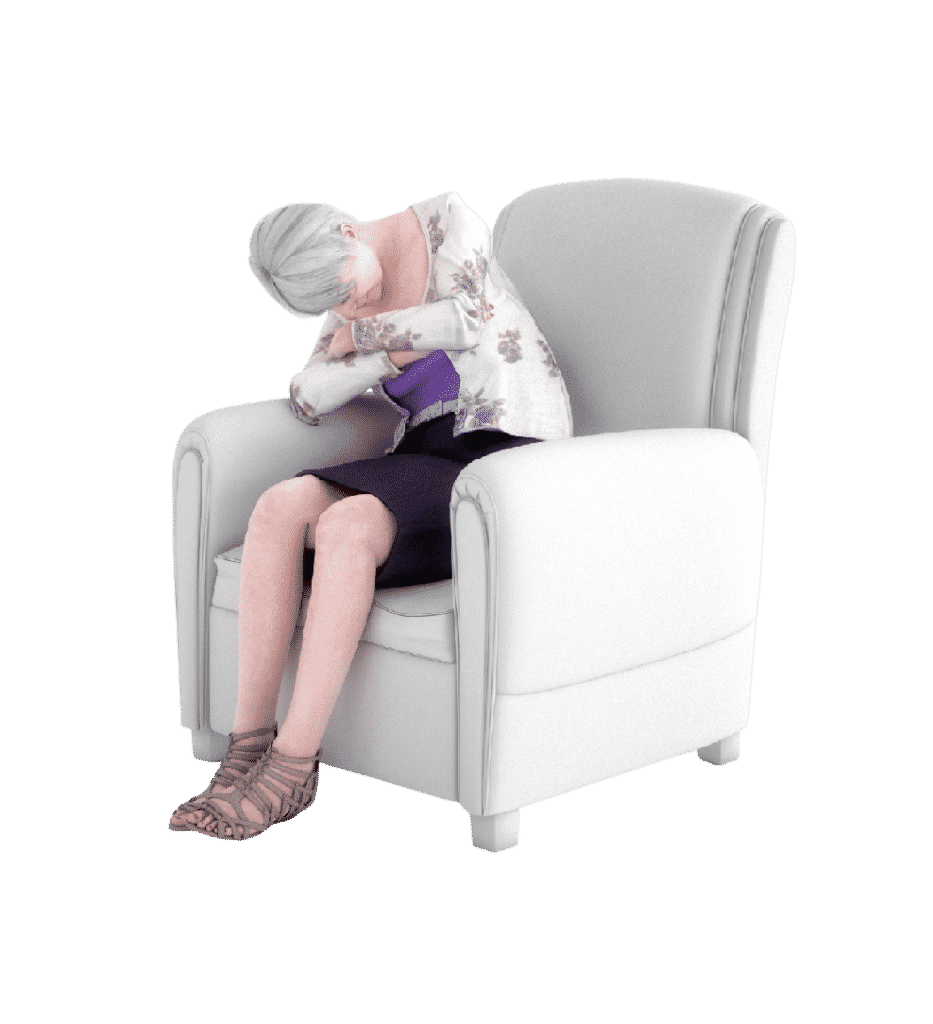
Common Key Requirements from Seating
Transfer Aid
The first requirement often that people look for is a solution to keep their elderly relative mobile and as independent as possible. This usually leads them to a riser recliner type solution which has a lift function which raises the seat of the chair to enable the patient to come to a standing position. These are typically non-adjustable therefore may have a shelf life of time when they are suitable for a patient if the patient’s needs deteriorate or if they no longer are able to use the riser function, requiring at a later stage a more complex solution as they become less and less mobile. For patients who are immobile i.e. cannot stand up on their own from their chair a riser recliner usually does not meet their clinical needs.
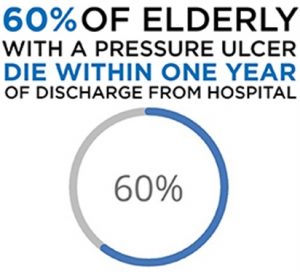
Pressure Management
People who are elderly or immobile may need pressure management as if they are sitting for long periods of time, or unable to shift their weight if they get too uncomfortable, they might risk developing a pressure injury. Pressure injuries can be debilitating and complications can even prove fatal in 60% of elderly patients within one year.1
Do not underestimate the complexity and complications which can arise with a pressure injury.
Lots of people think managing pressure can be simply done by adding a pressure cushion to their existing chair.
The dimensions of the chair and pressure management properties of the entire chair are vital to consider when pressure management is a concern.
If a patient is sleeping on a pressure redistributing mattress they are likely to also need a high pressure management chair, otherwise you risk undoing all the good work that has been done on the mattress overnight, by placing the patient in a poor chair throughout the day.
Chairs for patients with pressure management requirements must facilitate The Four Principles of Pressure Management in Seating to be effective in redistributing pressure.
The Principles are:
- Load the Body.
- Provide Postural Support.
- Provide Effective Repositioning.
- Use an Appropriate Surface.
Postural Support
As we get older our muscles tend to become weaker and fatigue more quickly. In sitting up right we require our muscles to work against gravity to hold a ‘correct’ or midline posture, the benefits of which are numerous.
Some wheelchairs can accommodate lateral supports to maintain midline posture but a wheelchair should only be used for outdoor mobility and not to be sat in for long periods of the day as it wouldn’t typically have the pressure management or full postural support which a therapeutic chair would provide.
Safety
Falls are a concern in elderly patients with 1/3 of adults over 65 falling each year.2
Falls in seating can be reduced by providing seating which correctly fits the person’s size as well as accommodating any fixed postural positions the patient may have. Seating Matters have designed chairs to reduce falls for high risk patients due to impairments such as visual or decision making. By using the correct chair you can drastically reduce the need for any restraints such as lap belts, ensuring the patient is safe and comfortable and not restricted in their chair.
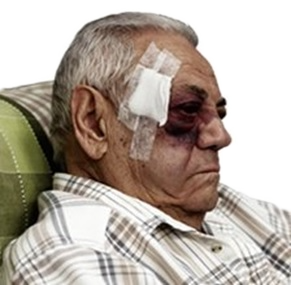
What Types of Chairs for the Elderly Are Available?
Typically the various chair options available to patients fall under four key categories:
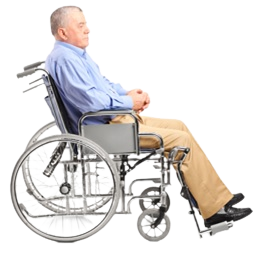
1. Wheelchairs
Wheelchairs are mainly for outdoor mobility and travelling over distances. There are many different variations of wheelchairs available from self-propelled to electric to moulded seat options. Wheelchairs usually offer the ability to load the feet but should not be sat in for long periods of time throughout the day as they often lack integral pressure management and postural support required by patients with declining mobility and function.
2. Riser Recliners
Riser recliner chairs are chairs which have two core functions, a riser function to enable a safe sit to stand transfer and a recline function to promote comfort. Riser recliner chairs do not typically offer pressure management, postural support or tilt in space and should not be used for patients who are immobile and who cannot shift their weight independently.
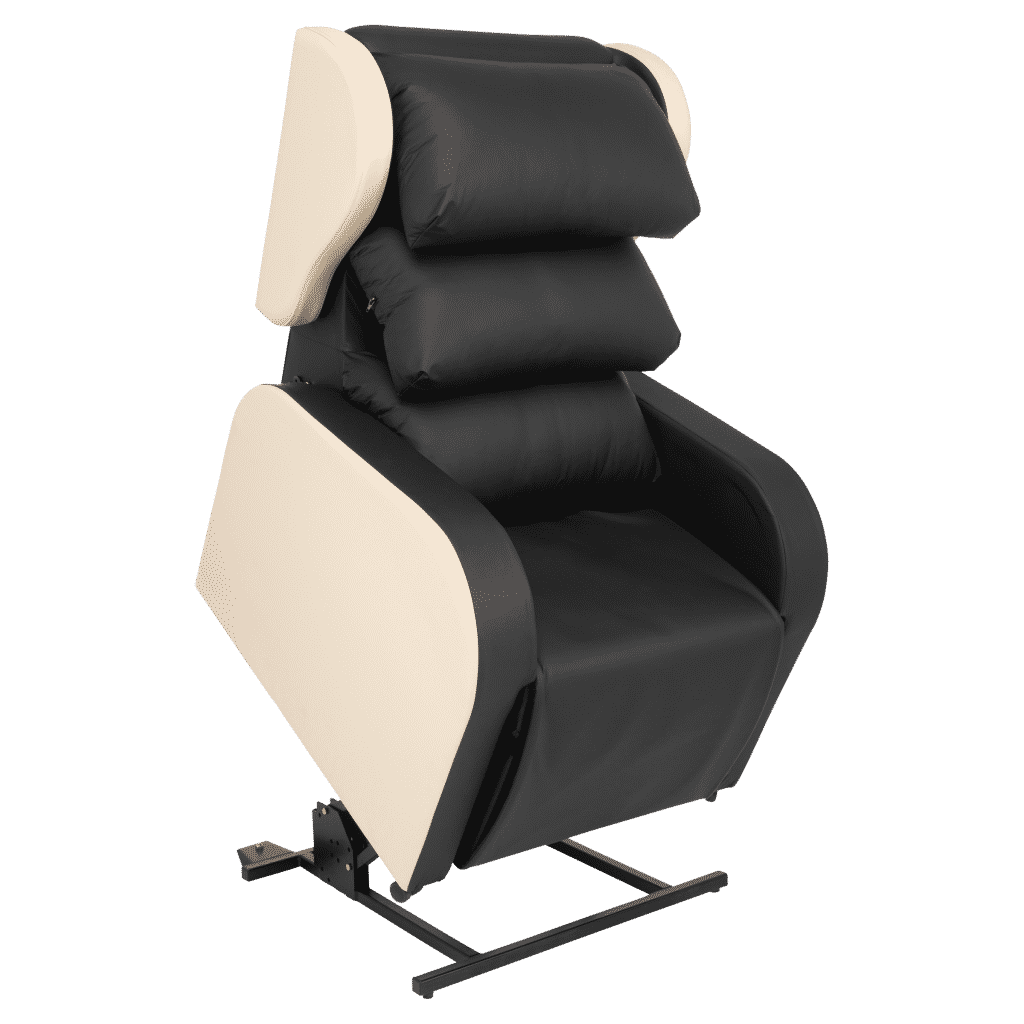
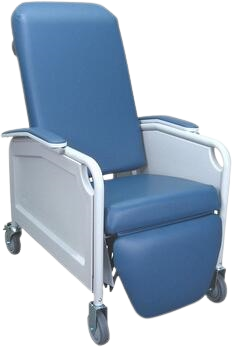
3. Geri Chairs/Lift Chairs
Geri chairs are standard sized hospital chairs with limited pressure management. They can typically accommodate hoists/slings and may have a riser function to enable sit to stand transfers. They are typically not size adjustable. They may offer a degree of tilt in space and back angle recline. They are usually made of a hospital grade material for easy cleaning and infection control. They will not offer postural support and pressure management required by a patient who is immobile. They are typically non-adjustable to meet changing needs of a patient over time or the clinical needs of a complex patient.
4. Therapeutic Chairs
Seating Matters therapeutic chairs have been designed by an Occupational Therapist to meet patient needs. They can provide optimal postural support and pressure management from the head to toe. Depending on the medical condition of the patient they may require a chair with tilt in space according to their pressure care needs. Seating Matters therapeutic chairs have been extensively clinically researched and proven to reduce pressure injuries and to increase patients’ function. The surfaces on the Seating Matters therapeutic chairs are covered with wipe-able, durable materials such as vinyl and Dartex which can be cleaned with hospital grade cleaner to promote infection control. The chairs can be adjusted to accommodate changing patient needs as a condition progresses meaning the one chair can last for the lifetime of the patient, or they can be adjusted in seat width, seat height and seat depth to suit various sizes of users within a multi user environment. All clinically essential features are provided as standard including a footplate on every chair as it’s vital to load the feet in seating
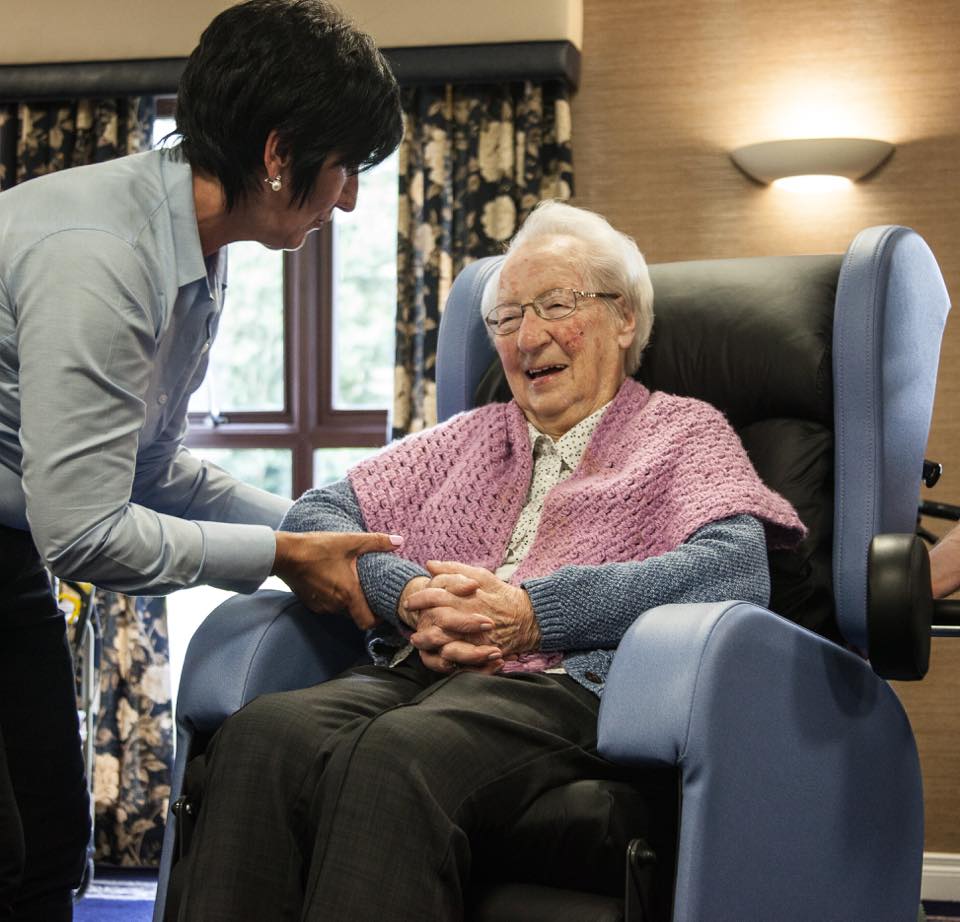
Things to Think About when Researching Options
Seat Height.
- If the seat height is too low it will be difficult to get in and out of the chair, conversely if the seat is too high the feet may not be safely loaded on the ground or on a footplate and may be left dangling, which increases the amount of pressure going through the buttocks.
- If the seat height is too low it will be difficult to get in and out of the chair, conversely if the seat is too high the feet may not be safely loaded on the ground or on a footplate and may be left dangling, which increases the amount of pressure going through the buttocks.
Position of the Arm Rests.
- The arm rests should not be too high, too low or too far away from the patient’s body to impede them being able to use them comfortably, providing support and stability.
- The arm rests should not be too high, too low or too far away from the patient’s body to impede them being able to use them comfortably, providing support and stability.
Does it Offer the Ability to Load the Feet?
- If the patient has reduced mobility or is immobile they will likely need to be able to load their feet either on a leg rest, footplate or the ground to ensure stability and to manage pressure redistribution throughout the body as 19% of our body weight goes through our feet.
- If the patient has reduced mobility or is immobile they will likely need to be able to load their feet either on a leg rest, footplate or the ground to ensure stability and to manage pressure redistribution throughout the body as 19% of our body weight goes through our feet.
Will it Accommodate Changing Needs of the Patient?
- Think about how the condition is likely to develop over time, i.e. the patient might be relatively mobile now but their level of mobility may decline within six months or one year – will the chair continue to meet their needs once they are off their feet? Consider patients using a riser recliner who can independently transfer now but may need assistance or maybe even a hoist in future if it’s a degenerative condition – a riser recliner will not be suitable for these patients and you may find yourself looking again at new options.
- Think about how the condition is likely to develop over time, i.e. the patient might be relatively mobile now but their level of mobility may decline within six months or one year – will the chair continue to meet their needs once they are off their feet? Consider patients using a riser recliner who can independently transfer now but may need assistance or maybe even a hoist in future if it’s a degenerative condition – a riser recliner will not be suitable for these patients and you may find yourself looking again at new options.
Is the Chair Adjustable in Seat Width, Seat Height and Seat Depth?
- If they gain or lose any weight, consider if the seat width is adjustable to accommodate this and ensure they are still loaded properly within their seat for optimum pressure management.
- If they gain or lose any weight, consider if the seat width is adjustable to accommodate this and ensure they are still loaded properly within their seat for optimum pressure management.
Does the Chair Offer Built in Pressure Management?
- Comfort is key and pressure management is important for elderly people who spend much of the day off their feet. Your chair should offer built in pressure management to reduce the risk of pressure ulcers developing which can be very dangerous for the elderly. If they are off their feet and cannot shift their weight independently when they get uncomfortable, you need to think of and consider which tilt in space can facilitate a weight shift allowing tissue to be re-oxygenated reducing the risk of pressure ulcers developing.
- Comfort is key and pressure management is important for elderly people who spend much of the day off their feet. Your chair should offer built in pressure management to reduce the risk of pressure ulcers developing which can be very dangerous for the elderly. If they are off their feet and cannot shift their weight independently when they get uncomfortable, you need to think of and consider which tilt in space can facilitate a weight shift allowing tissue to be re-oxygenated reducing the risk of pressure ulcers developing.
Is the Chair Easy to Clean and Maintain?
- For infection control purposes, the chair chosen should be easy to wipe clean and have no areas of entrapment for dirt and bacteria. When incontinence, reduced immune systems and open wounds are factors to consider, this becomes of even greater importance. Consider the frame, the fabric used and the various areas which dirt can accumulate, are all areas easy to reach?
- The Seating Matters chairs are modular making them easy to take apart and clean reducing any areas of entrapment for dirt and bacteria.
- Incontinence can be an issue with elderly patients and is something to consider in seating for patients with various medical conditions especially neurological conditions. You may want to look at seating options made with materials which can be easily cleaned and wiped down. All Seating Matters surfaces are made with waterproof, wipable vinyl and Dartex materials which can be cleaned easily to promote infection control. Dartex offers the added benefit of being a breathable fabric to reduce moisture of the skin which can contribute to development of pressure injuries.
What Level of Warranty Is Provided?
- Check if the chair offers a warranty. Seating Matters are proud to offer an industry leading 7 year frame warranty to offer you peace of mind and confidence. We also provide a free aftercare support service helping you to set up, service and maintain your chair.
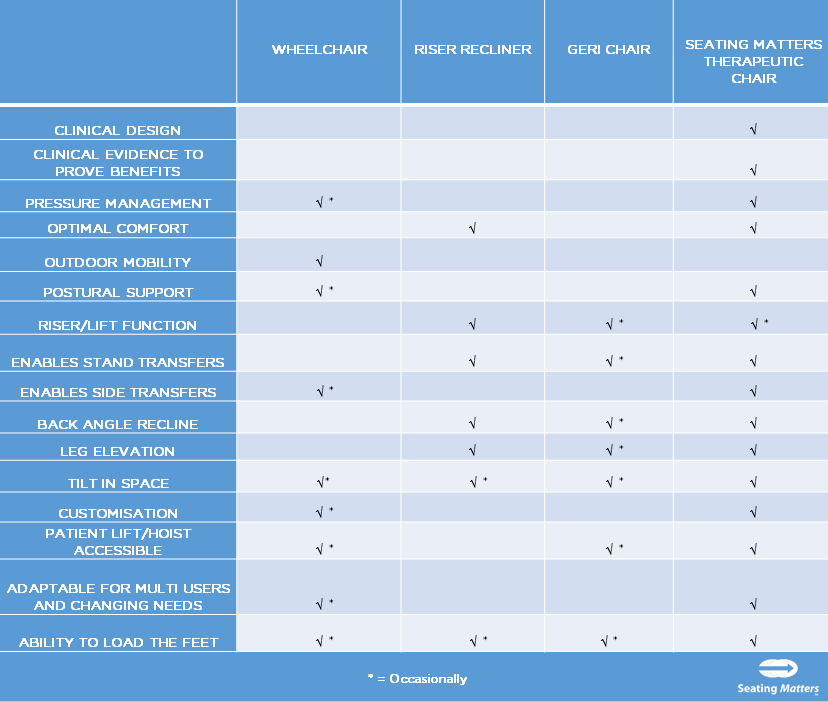
So How Do I Chose a Chair for my Elderly Relative?
Here we have summarised the key functions of the various seating solutions that we have looked at in this blog in one easy to read table.
We would recommend you seek the input of a clinician such as an Occupational Therapist or Seating Specialist to guide you and provide information on the long term requirements of your patient or family member and how their needs may change over time, so you can factor this into your decision.
What we really want to do is to reach those patients and families who are searching for a better seating solution for their relative, searching for information on chairs for elderly, to prevent them from purchasing the wrong chair due to misinformation or lack of knowledge. We come across instances every day where families get in touch as they have spent hundreds or sometimes thousands on a chair believing it to be the correct solution for their loved one, only to realise maybe 6 months later that it no longer accommodates their clinical or functional needs, or that they have developed a pressure ulcer. They then find that they are back to square one, on the lookout again for a new chair.
We would never recommend a Seating Matters chair to a patient if it’s something they don’t need or are not likely to need in the future. We routinely recommend other chair types if the particular patient case does not warrant a therapeutic chair.
*Features listed in table as standard on Seating Matters chairs are available on some models. Table completed to the best of our knowledge on the other seating options available.
References:
- https://www.patientsafetyinstitute.ca/en/toolsResources/Hospital-Harm-Measure/Documents/Resource-Library/HHIR%20Pressure%20Ulcer.pdf
- https://www150.statcan.gc.ca/n1/pub/82-624-x/2014001/article/14010-eng.htm
*Note – the purpose of this blog is to give an overview of the product with some tips to consider on its use. This is not intended to be a substitute for professional or medical advice, diagnosis, prescription or treatment and does not constitute medical or other professional advice. For advice with your personal health or that of someone in your care, consult your doctor or appropriate medical professional.
As used by








Tub Aged Care Chairs
As we advance in years, we slowly start to appreciate that our bodies become weaker and the things that we once took for granted as simple functional movements are no longer possible. For a variety of reasons, each person ages differently and will face different complications as they age.
Our weight, the way that we sit and how we stand all contribute to whether the body experiences pain or is supported. The tub chair is a staple of aged care that has been around for some time. Today, however, Australian’s can benefit from a superior seating option that takes the familiar to new, beneficial heights.
Tub Chair for Aged Care Patients
At Seating Matters, we research, develop and manufacture the very best supportive seating solutions available on the market for those delivering aged care. Our chairs are used by many different organisations including Anglican Care, Baptist Care, Uniting Care Australia, Regis, NDIS and RFBI.
Martina Tierney leads our company. An occupational therapist with over 30 years of experience, she is a world-leading expert in this field and created these chairs to deliver a supportive option for patients that was delivered to meet their specific needs. All of our chairs can be adjusted to fit the dimensions of any person that requires any special care.
Benefits of Supportive Aged Care Chairs
While a soft chair might seem like a good idea for someone in aged care who wants comfort, this option does little to promote positive posture and can lead to many aches, complaints and secondary problems to arise. Improving the quality of life and giving patients the dignity they deserve as they grow older is imperative when delivering care. As such, investing in high-quality aged care chairs affords your facility the chance to improve how it is perceived, but also improves conditions for those that work there.
Unless your patients are supported by a team of caregivers that can do for them what they need throughout the day, then they might as well be living at home. As such, well-designed seating that affords the patient and caregiver the functionality that they require without necessitating an exertion that could lead to physical injury or strain adds immense value.
Having appropriate seating in place helps promote better blood circulation for patients. Those that are stuck in the same position all day long can be expected to develop complications such as blood clots. Chairs that deliver convenience with regards to mobility, movement and shifting weight each day help patients to remain comfortable.
In the absence of mobility, any person’s quality of life can be expected to drop considerably. Movement is vital to maintain communication with other patients in care and the social element of living in a nursing home is vital to promoting positive attitudes.
Tub Aged Care Chairs Eliminate the possibility of Pressure Injuries
At Seating Matters, we endeavour to achieve a standard of quality in our chairs that eliminate discomfort and alleviates the possibility of pressure injuries. We rigorously develop each chair that we manufacture to deliver the most benefits to each user and to reduce the expenditure on staff and resources. To help clinicians deliver more effective practices, we also provide a free clinician’s seating handbook, which can be posted to your address on request.
Aged care chairs are an essential investment for any facility that looks after the elderly, but furnishing your spaces with the very best solutions available in Australia today will benefit both patients and your staff alike. We look forward to equipping you with the ultimate standard in comfort and support soon.
Seating Matters provides clinical healthcare seating chairs for Disabled & Elderly people in Australia. We sell kyphosis chairs, pressure relief chairs, cerebral palsy chairs, occupational therapy chairs, parkinsons disease chairs, tilt space chairs, fall prevention chairs, huntington’s disease chairs, multiple sclerosis chairs, brain injury chairs, chairs for demantia patients & other seating range in Australia. Browse our website for more information or contact us for more details.
Read Less

